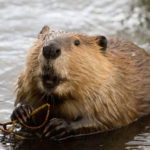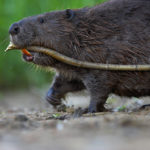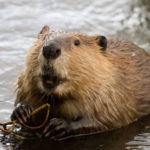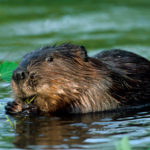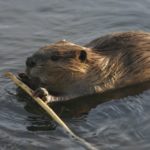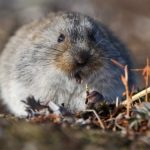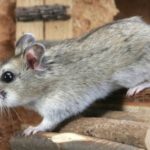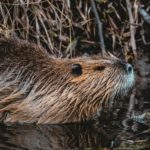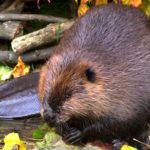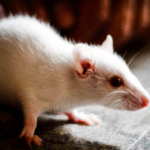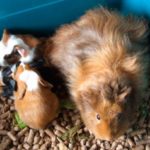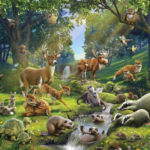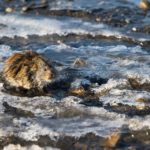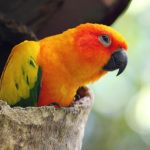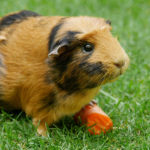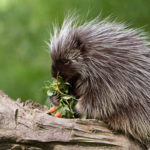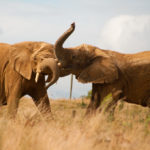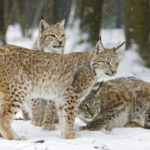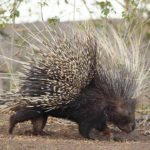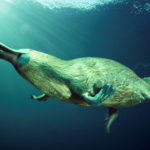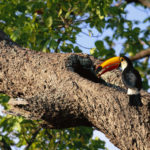Beavers
 Beavers are the largest rodents of the Northern Hemisphere, in size inferior only to capybarums from South America. In the world there are only two species of beavers – European and Canadian. Because of the peculiar structure, these rodents are separated into a separate family of beavers. Both species have a similar structure and dimensions and differ mainly in coloring details.
Beavers are the largest rodents of the Northern Hemisphere, in size inferior only to capybarums from South America. In the world there are only two species of beavers – European and Canadian. Because of the peculiar structure, these rodents are separated into a separate family of beavers. Both species have a similar structure and dimensions and differ mainly in coloring details.
Beavers are massive animals, their body length reaches 1 m, and weight 30 kg! They have short paws and a neck, a relatively large head that is common to all rodents. At the same time, beavers have completely unique adaptations to aquatic life. So, their hind legs have swimming membranes between the toes, the claws are relatively blunt and slightly flattened, on the hind legs the claw of the second finger has a split end and is similar to tweezers.
With this claw, the beaver combs the hair and gets rid of the outer parasites. The ears of the beavers are small, when immersed in water they fold along and reliably seal the ear canal from water ingress. Also, the nostrils of the beavers close together during swimming. Another barrier to water is the special outgrowth of the lips that separate the beaver incisors from the oral cavity. Thanks to them, beavers can open their mouths under water and gnaw branches, but the water does not enter the mouth and the animals do not choke. By the way, teeth of beavers are yellow-orange in color. A characteristic distinctive feature of these animals is a wide, flat tail, covered with horny scales. Between the scales, separate rigid hairs grow, and in the middle of the tail lies a crest which acts as a stiffener, that is, turns the tail into a single supporting organ.
The wool cover of beavers consists of long and slightly stiff guarded hair and a soft thick undercoat. When immersed in water, the coarse hair becomes wet, so the beaver that has emerged from the water looks unattractive. But a dense undercoat serves as a reliable barrier against water, so in reality a beaver will never get wet through. The beaver fur is famous for its heat-insulating properties, has a good wear, it is well suited for dressing, it is beautiful in finished products, therefore it is considered one of the most valuable kinds of fur. The color of European beavers is often monotonously brown (very rarely black), in Canadian beavers black and brown specimens are found with about the same frequency, paws and tail are always black. Sexual dimorphism is almost not expressed, the female is only slightly larger than the male.
Beavers inhabit the entire temperate zone of the Northern Hemisphere, found in Europe, Asia and North America. In the north, the range of beavers borders on the forest-tundra, in the south – with the steppe zone. Beavers are aquatic animals, therefore they are found only on the banks of water bodies. Most of all these animals like small rivers with a quiet current, streams, backwaters, small lakes, you can meet beavers and in the swampy areas of the forest. At the same time, in these (vast and treeless) swamps, these animals do not live, you will not meet a beaver on the bank of a mountain river, endless lake, sea or ocean.
The reason for this selectivity is that beavers feed on woody vegetation, so somehow the water bodies that they inhabit are in the forest. And again here beavers show their selective taste, not in every forest they will live. The main condition for beavers is that trees should grow as close as possible to the water’s rim, which is why small forest streams and lakes, drowning in thickets, are admired by these animals. In a harmonious pine forest, in a forest growing on a rocky or wide sandy shore, the beavers will not settle.
Beavers are sedentary animals, which from year to year, and even from generation to generation, occupy the same parts of the forest. At the same time, with a shortage of feed, housing, anxiety, changes in the hydrological regime of the reservoir, beavers can go in search of better places for several tens of kilometers. Residential areas of beavers have clear boundaries, which animals guard against encroachment by neighbors, leaving odorous marks. For the remedy is used the secret of anal glands with a strong musky odor, and an additional fixer is an oily secret. These animals live in pairs, or rather families, as the brood remains with the parents the first year of life.
Beavers are nocturnal animals, they prefer to build and harvest feed in the dark, it is extremely rare to see the beaver during the day. In general, these animals are extremely cautious, when they come to the surface, the beaver carefully studies the surroundings and, until it is fully assured, it will not come ashore. If the beaver saw an animal or a person on the shore, he immediately warns his relatives about the danger with a loud slap of a flat tail on the water. On this signal, all family members dive under the water and sit in the hut. The beaver’s voice is like a silent whistle, but tail flaps are used for communication much more often.
